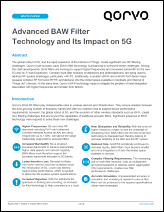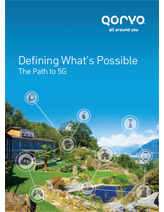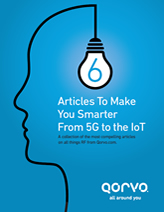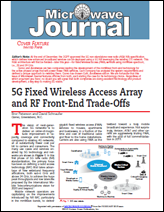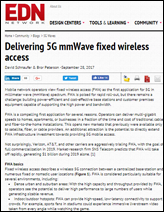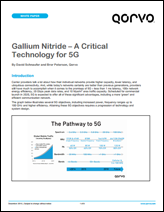Qorvo is Making 5G a Reality
Beyond Smartphones to Smart Everything
Qorvo is making 5G deployment a reality and supporting the growth of mobile data with a broad range of RF connectivity solutions. Our robust RF portfolio for both wireless infrastructure and mobile devices include PAs, phase shifters, switches, integrated modules and other high-performance RF solutions.
View our 5G infrastructure and 5G mobile products.
New 5G Products
Watch Now
Featured 5G Resources
Visit our Design Hub for more white papers, articles, e-books, videos and blog posts on 5G.
What 5G Is
5G is massively broadband
reaching into frequencies never previously thought of for mobile wireless — above 3.4 GHz,
and even to 30 GHz and beyond.
5G is ultra efficient
for streaming data, taking full advantage of carrier aggregation and
massive MIMO.
5G is fixed wireless
giving more choices to get 1 Gb/s connections to your home and business.
5G is wireless infrastructure
using beam steering and high-power GaN, based on the
technologies in phased-array antennas for defense.
5G is low-latency
for real-time connections enabling autonomous vehicles and augmented/virtual reality.
5G is the backbone of the Internet of Things
connecting more than a trillion devices to the internet in the next 10 years.
Qorvo is the standard setter — participating in standards bodies and partnering with
wireless carriers — to define 5G RF for the future.
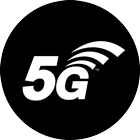
5G Complements the 4G LTE Network
- 5G will start as an overlay of the 4G LTE network.
- The 5G radio specification (called 5G NR for "new radio") will have both Non-Standalone (NSA) and Standalone (SA) operation.
- NSA is an evolutionary step for carriers to offer 5G services without building out a 5G core network, until they add the full SA 5G core later.
- Starting in 2019, 5G will encompass major new capabilities.
Connecting the Uses of 5G
Qorvo connects RF for all 5G use cases — more than just cellular and Wi-Fi.
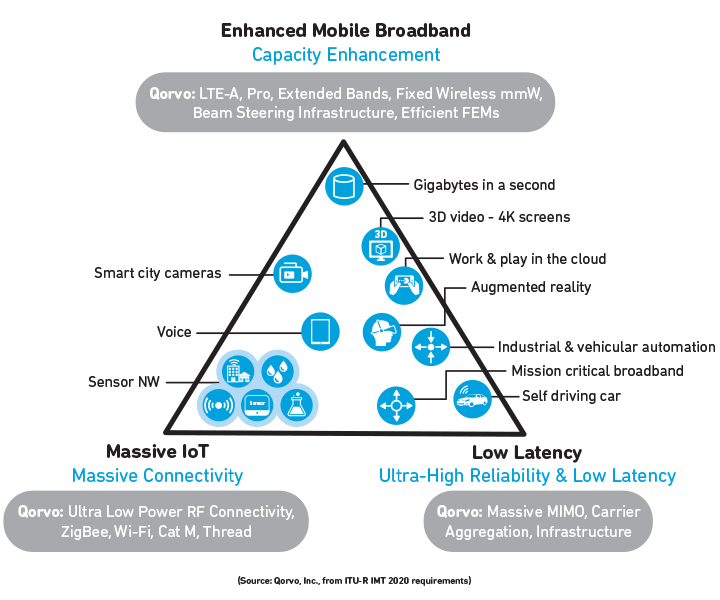
RF Communication Technologies by Use Case
5G will overlay the 4G LTE network in the coming years. The RF function, frequency band, power level and other performance requirements determine which semiconductor technology is the best fit.
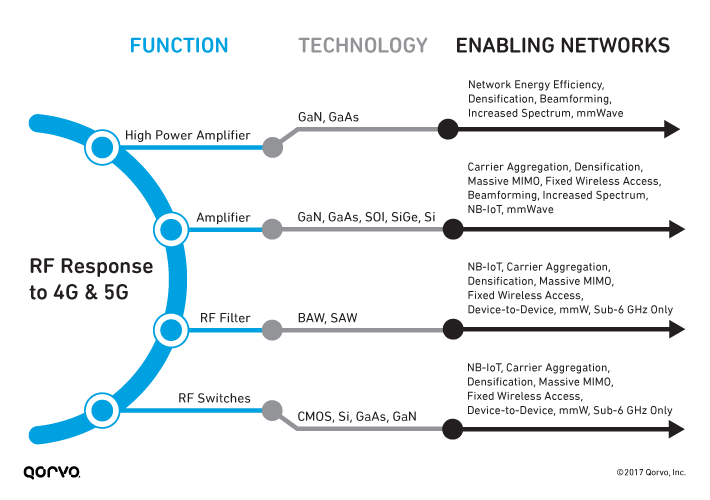
Related Content
Qorvo Introduces Industry-Leading Low Noise Figure LNAs Enabling 5G Base Station Deployments
5G and GaN: Understanding sub-6Ghz Massive MIMO infrastructure (source: embedded.com)
Qorvo Launches High Performance BAW Filter to Support Band 41 5G Base Station Deployments
Qorvo Ships 100 Million RF Devices for 5G Wireless Infrastructure
Qorvo Mobile 5G Portfolio Enters High-Volume Production
Qorvo RF Fusion™ Wins Multiple Marquee Smartphone Designs
Qorvo Expands 5G Leadership with Industry’s First 28 GHz GaN Front End Module
Qorvo Expands 5G Leadership with New 5G Infrastructure Solutions
Qorvo Enables Rapid Deployment of Narrowband IoT
Qorvo and National Instruments Demonstrate First 5G RF Front-end Module
Qorvo Wins Prestigious GTI Award for 5G RF Front End
Qorvo Expands Wireless Infrastructure Portfolio to Support All 5G Frequency Bands
Qorvo Introduces Industry’s First High-Power BAW Filter for Migration to 5G
Qorvo Enables Next-Generation 5G Wireless with First 39GHz Dual-Channel GaN FEM
Qorvo Propels Deployment of 5G Networks with mmW 28GHz Solutions
Qorvo Delivers Highly Integrated Solution for Pre-5G Massive MIMO Networks
Qorvo Accelerates Race to 5G with Industry’s First 5G Front End














